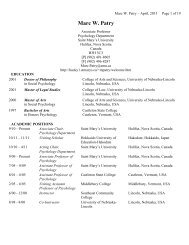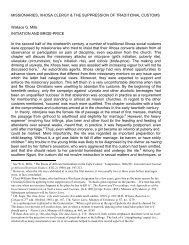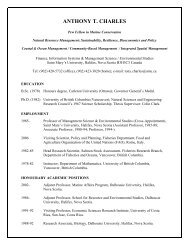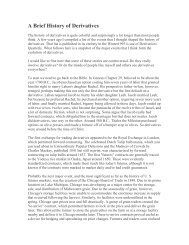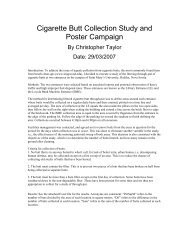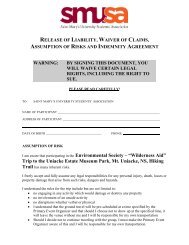Social, Economic and Cultural Overview and Assessment for Ocean ...
Social, Economic and Cultural Overview and Assessment for Ocean ...
Social, Economic and Cultural Overview and Assessment for Ocean ...
Create successful ePaper yourself
Turn your PDF publications into a flip-book with our unique Google optimized e-Paper software.
• While the level of detail <strong>and</strong> types of data collected differs markedly in the various<br />
industrial profiles, there were several common sub-variables that seemed to surface<br />
including (1) the value of the industry to the economy; (2) the number of people employed<br />
in each industry <strong>and</strong> (3) the industry’s annual total production.<br />
• <strong>Cultural</strong> considerations appear in several case studies (e.g. South-East Marine Region,<br />
Great Barrier Reef, Russian Arctic <strong>and</strong> Northwest Forest Plan) but to varying extents. For<br />
example, in the South-East Marine Region, an extremely in-depth indigenous assessment<br />
was carried out, evaluating traditional relationships <strong>and</strong> rights, aspirations, impacts of<br />
colonisation etc.. On the other h<strong>and</strong>, in the Russian Arctic, cultural considerations<br />
included some demographic statistics <strong>for</strong> indigenous peoples accompanied by a basic<br />
overview of traditional activities.<br />
• Aside from in<strong>for</strong>mation on indigenous populations, the next most common <strong>for</strong>m of<br />
cultural data relates to national historic sites such as shipwrecks <strong>and</strong> archaeological<br />
remains, national parks <strong>and</strong> protected areas <strong>and</strong> so on (Scottish Coast, South-East Marine<br />
Region, Great Barrier Reef).<br />
• Governance data appeared intermittently throughout the case studies <strong>and</strong>, where it did, it<br />
generally involved listing applicable legislation <strong>and</strong> relevant institutions (government<br />
agencies, NGOs, community <strong>and</strong> environmental organizations, etc.).<br />
Multi-Country<br />
• The assessments at this level tend to be quite broad <strong>and</strong> usually attempt to paint a general<br />
picture of each of the countries involved. As such, macro-indicators such as GDP are<br />
heavily relied upon. These may not accurately portray what is happening at lower scales.<br />
• At this scale, cultural variables are rarely considered in assessments. Given the enormous<br />
areas in question, there may be too many distinct populations to consider properly. Also,<br />
the area of interest in these assessments is vast <strong>and</strong> predominantly open-ocean; cultural<br />
ties to the marine environment often are coastal in nature (due to accessibility issues), so it<br />
is possible that cultural influences are not exerted as strongly at this level.<br />
• Governance aspects considered in the large scale assessments tend to take on the <strong>for</strong>m of<br />
listing relevant international conventions rather than national policies/legislation.<br />
17



